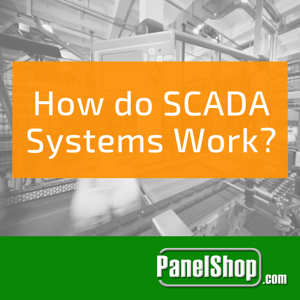 SCADA may be one of the most used acronyms in the control industry, referring to Supervisory Control and Data Acquisition systems. The software application is widely used in process control, composed of a central control system along with controller network interfaces, input/output and communication equipment.
SCADA may be one of the most used acronyms in the control industry, referring to Supervisory Control and Data Acquisition systems. The software application is widely used in process control, composed of a central control system along with controller network interfaces, input/output and communication equipment.
The primary purpose of SCADA systems is to monitor and control equipment in the industrial processes which include production, development, manufacturing and fabrication. Moreover, these systems are also used in infrastructural processes such as Oil & Gas, Power Distribution and Water Control.
Architecture
A SCADA system is generally built on centralized topologies, monitoring & controlling an entire geographical area. It is a software package that sits on top of a layer of hardware, gathering data on the process and sending it over. Control actions are taken through Remote Terminal Units (RTUs), generally PLCs and associated controllers. For instance, in a thermal power plant, temperature is sensed through an array of sensors while appropriate control action (valve) is taken through PLC analog outputs.
SCADA systems allow operators to change set points, modify alarm conditions and set up necessary logs for analysis later on. The systems usually communicate through a mesh of wireless and wired technologies and may run on proprietary protocols.
Hardware
Generally, SCADA systems can be broken down into two:
- Client layer
- Data service layer
The client layer deals with man-machine interaction whereas the data service layer handles data processing activities. The data service communicates with field devices such as RTUs, sensors, etc. over WAN or LAN networks. RTUs convert sensor signals to digital format before sending it to the master, after which appropriate control signals are generated to relays.
Software
Servers used in SCADA system are primarily for multi-tasking and real-time database functions. They are responsible for gathering & handing data, providing trends and diagnostic information regarding the operation. Depending on their features, there may also be options to set up predictive maintenance schemes, logistic information and so on. The capabilities of the software side are dependent on the vendor or the development team.
Working Procedure of SCADA System
The primary functions of SCADA systems can be broken down as follows. These functions are performed through a combination of sensors, RTUs, controllers and communication networks.
-
Data acquisitions:
Real world systems consist of thousands of nodes, making their management a challenging task. It is vital to have precise information about the status of particular sensors. The accuracy of control systems depends on the quality of data acquisition.
- Data communications
SCADA systems may use wired or wireless communication technologies between devices and users. Real-time systems have sensors and devices spread over a wide geographical area, making wireless networks the norm. Moreover, for SCADA systems that manage multiple remote areas, internet communications may also be utilized. Generally, SCADA systems have specific protocols and communication takes place through VPNs to prevent intrusions.
- Information/data presentation
An HMI or Human Machine Interface is employed by SCADA to provide the user with information collected from various networked devices. The information if displayed in a manner that is understandable and actionable, since there may be times when quick user action may be required. The interface usually makes use of graphical pictures of real-world objects such as that of a pump or tank to make processes understandable.
- Monitoring/control
SCADA systems use different switches for operation of multiple devices and displaying their status at the control area. The processes can be turned on/off or modified based on an analog value through these switches. Most processes are automated against user defined setpoints while others critical tasks may require additional human interventions.
One of the biggest advantages of SCADA systems is their scalability. Expanding SCADA systems is simple and doesn’t require extraordinary efforts. Moreover, these systems have been under development for decades and have therefore reached a level of maturity, making them usable for mission-critical applications.





